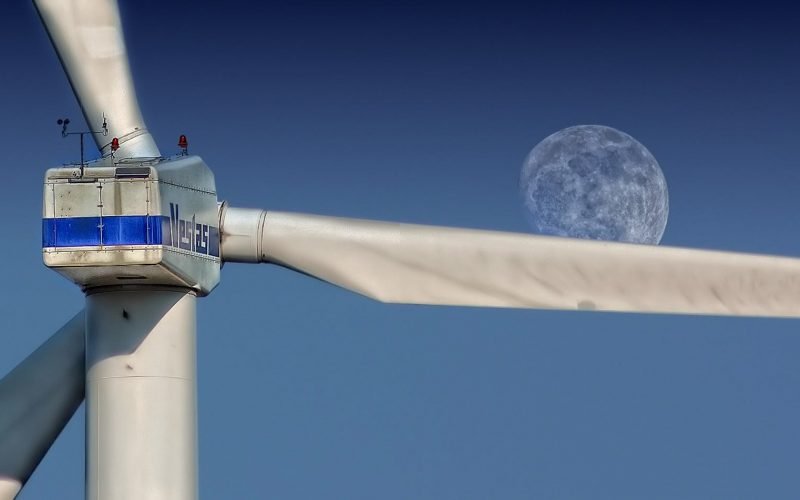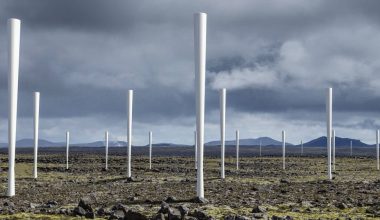Wind energy is another renewable energy resource just like solar energy, geothermal energy or tidal energy. We use the wind to generate electricity for households and businesses.
The advantage of wind energy just like all the other forms of renewable energy resources is that it has the ability to replenish and be a constant source of energy for all. It is highly sustainable and renewable having almost no impact on the environment.
Energy is generated by using the kinetic energy of the wind that is then used to turn turbines that lead to the production of electricity. Wind farms consist of many individual wind turbines that are connected to electric power transmissions. Once the wind turbines start to rotate, they end up generating electricity.
Brief History of Wind Energy
The utilization of wind to make electricity has been going on for a long time. The first windmill to produce electricity was set up way back in 1887 in Scotland. As development began in electric power, wind energy good further push through new applications in which it could be used for benefits.
Throughout the 20th century, many small wind stations started to be developed for farms and residences. The USA, during the 1973 oil crisis took measures that involved installation of larger utility-scale wind generators that could be connected to electrical power grids for remote use of power.
By 2012, the US-installed about 60 gigawatts of wind generators. Nowadays, wind generators are available in different sizes and capacities both offshore and onshore that will provide electrical power to electrical networks throughout the region.
You should also read up on Pros and Cons of Wind Energy
Here we will look at some of the components of wind energy and how wind turbines work to produce electricity.
How Wind Turbine components work together to generate Electricity?
Wind turbines have a very simple and straight forward objective when it comes to producing electricity from wind. The wind turbines utilize the speed (kinetic energy) of the wind to make energy. The kinetic energy from the wind turns two or three propellers like blades around the rotor. The rotor has a connection with the main shaft of the turbine. This shaft then spins a generator to eventually produce electricity.
Kinetic Energy is the energy an object has due to its movement.
- The direction of the wind
The wind direction is very crucial and must be determined before setting up the wind turbine in order to produce electricity with maximum efficiency. Upward wind turbine faces into the wind whereas downward wind turbines face away from the wind.
- Blades
Most wind turbines have about two or three blades installed in them. Once the wind is blown over the blades, they begin to lift and rotate, which in turn causes the rotor to spin as well.
- Rotor
The rotor is made from combination of blades and the hub. Rotors begin to rotate in conjuncture with the blades once the wind blows over them.
- Low-speed shaft
The low-speed shaft turns at about 30-rpm.
- High-speed shaft
It helps to drive the generator.
- Gearbox
The gearbox is a bridge that connects the low-speed shaft to the high-speed shaft and helps increase the rotational speed from 30-60 rpm to about 1,000-1,800 rpm. This is the ideal rotational speed required by most generators of the wind turbine to generate electricity.
The gearbox is the most expensive component of the wind turbine and also the heaviest. Engineers are exploring alternatives to find a way to make direct drive generators that operate at lower rotational speeds, thus preventing the use of gearboxes.
- Generator
It is the source that produces electricity. It produces 60-cycle AC electricity. Mostly used generators are based on off-the-shelf induction. This means that energy from another source makes the generator parts move and generate electricity.
- Anemometer
Anemometer helps to determine and measure wind speed and transmits wind speed data to the controller.
- Controller
The controller helps to start up the machine at wind speeds of around 8-16 miles per hour and shuts off at about 55 miles per hour. Turbines are programmed in such a way that they do not operate at wind speeds above 55 miles per hour as they may be damaged by the high winds.
- The Pitch System
The pitch system is essential in controlling the rotor speed of the wind turbine just like the controller. It has the ability to turn blades out of the wind and to keep the rotor of the turbine from turning in winds that might be too low or too high to produce electricity.
- Brake
Brake is a component important during emergency situations as it stops the rotor either mechanically, electrically, or hydraulically.
- Wind Vane
After the wind vane measures the direction of the wind, it communicates with the yaw drive to orient the turbine properly in accordance with the wind.
- Yaw drive and motor
Yaw drive helps in the orientation of the turbines. The upwind turbines are oriented in such a way as to keep them facing towards the direction of the wind. Downwind turbines do not require the yaw drive as the wind manually blows the rotor away from it. The Yaw motor is concerned with powering the yaw drive.
- Tower
The tower supports the structure of the turbine. The wind speed tends to increase with greater height, hence taller towers enable turbines to capture more energy and generate more electricity. Towers are made from concrete, steel lattice, or tubular steel.
- Nacelle
The nacelle is situated on the top of the tower and contains the gearbox, low and high-speed shafts, generator, controller and the brakes. Sometimes nacelles may be large enough for helicopters to land on them. Now that’s a good use of space!
Conclusion
These components altogether allow wind turbines to operate at maximum efficiency and in a safe manner. The only component we forgot to talk about are the amazing engineers who make these components and do routine maintenance to ensure seamless working of these turbines.
With increased awareness regarding renewable energy sources and their benefits more and more people have started adopting wind energy to produce electricity; Shifting from previously existing sources of non-renewable energy resources such as fossil fuels which were constantly depleting and highly damaging to the environment.

